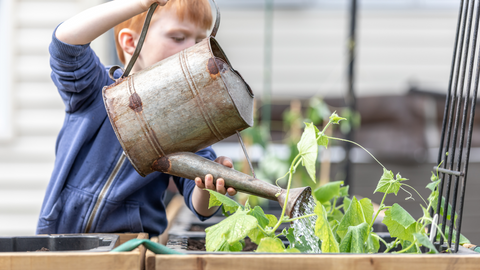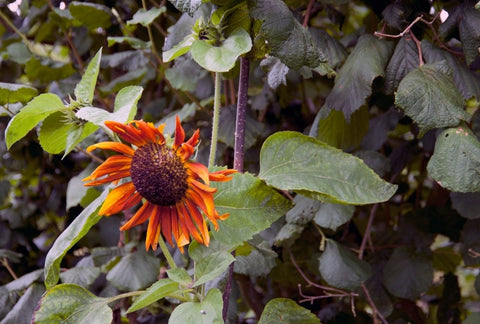As we prepare for a long summer, now is the time to be planning out your garden’s irrigation needs. Not only will this increase its chances of surviving through the seasons, but a well considered watering and irrigation plan can significantly reduce your ongoing workload!
Keep in mind that every garden is different, and sometimes even different areas within the same garden can have different watering needs. Feel free to use these tips as a guide, but pay attention to your unique (indoor or outdoor) garden and focus on what works best for you.

Watering your Outdoor Plants
First, let's talk about outdoor gardening, specifically hand watering:
This method is definitely the most flexible and simplistic, as you don’t need additional gear or complex planning. Do keep in mind, however, that it can be prone to mishaps and is fairly time-consuming. If your garden isn’t very big, this is the way to go.
Remember these tips when watering your outdoors plants:
- Water more volume than you think, and less frequently. Plants tend to like deep watering, meaning the water penetrates deep into the soil. The plant will send its roots deep into the soil, where they will stay cooler and more consistently moist. This is especially beneficial if you live in a hot and dry climate.
- Water your larger plants (especially tomatoes) for about a half a minute to a minute, then wait a week before you water again.
- For younger seedlings, and shallow-rooted veggies, like lettuce, you will want to water more often. Daily, or even twice a day in warm climates. The leaves will tell you how you’re doing. If you’re not watering enough, the leaves will droop, and the soil will be dry.

- Water early in the morning or evening to get the most out of your watering. When you water on cooled soil while the sun’s not present, less water evaporates than it would on hot soil during the day. Then the plants can sufficiently supply themselves with water before the next day’s heat.
- Keep leaves dry to avoid diseases. Wet leaves become diseased leaves. Leaves that are made wet in the sun develop slight burn marks (burning glass effect of the water droplets). Kept wet overnight, leaf-mold diseases may result.
- Water evenly around the plant for a more balanced root system. Watering consistently at one part of the plants leads to one-sided root growth and eventually, poorer nutrient absorption in the soil.
Watering your Indoor Plants
You may not have space outside for a large outdoor garden, but that doesn’t mean you can’t have an indoor jungle. Below we'll cover some of the most common questions and issues that gardeners run into for their indoor gardens.

Is tap water okay for your plants?
Most tap water is okay for plants unless it has salts that can build up in the soil over time. If you have a filtration system, filtered water is your best bet. But you could even collect rainwater to use for your watering. Either way, make sure the water you use is room temperature. Nothing too warm or too cold. A good trick for using room temperature water is to always fill up your watering can after using it. That way, it will be ready to go with the perfect temperature for the next time you water.
How much should you water?
This depends on the plant. If you’re unsure, research what region your plant is from, and what kind of climate it grows in. Philodendrons, a very popular houseplant, come from tropical regions of the world where it rains regularly. They usually have big leaves that use up a lot of water, so will need more water than desert denizens like cacti and succulents, which typically do better when you let the soil dry out between waterings.
When to water your plants?
Check your houseplants at least once a week to see if they need a drink. You’ll be able to tell by sticking your finger one inch into the soil. If it feels dry, it usually means it’s time for watering. Also, if you notice the leaves are starting to wilt, that can be a sign of thirst. Try to water in the morning if you can so that any water that splashes on the leaves will more easily evaporate during the heat of the day. If wetness remains on the leaf, there will be a greater chance for disease.
How to tell if you’re overwatering?
As we discussed in our last blog, having a pot with drainage holes is highly recommended. With too much water, and no room for it to go anywhere, your plant will literally drown. Roots need oxygen in order to survive. But even with good drainage, you should be careful not to overwater, as roots need space between waterings to air out. Luckily, there are a few ways to tell if you are overwatering your plants. Watch for yellowing leaves that fall off easily, and no new growth in the plant. Check the soil when you notice these problems. If it’s wet, that probably means you’ve over-watered.
What about self watering pots?
The one caveat, or exception to the above point on drainage is if you're using self watering planters. Our favorite types are ones that have a ceramic interior, or liner, and a reservoir surrounding that. Urban Leaf offers a couple of different versions of this design, which you will find in our store - see also the example below. 
Use quality, clay-rich soil for better water retention
Clay materials have better expanding properties and can more easily and evenly hold water in the soil better In wet summers and in winter, successful water drainage is key to prevent waterlogging.
If you've found this information useful, be sure to sign up for our newsletter where we share weekly tips and tricks all about Indoor and Urban Gardening!










There are no comments for this article. Be the first one to leave a message!